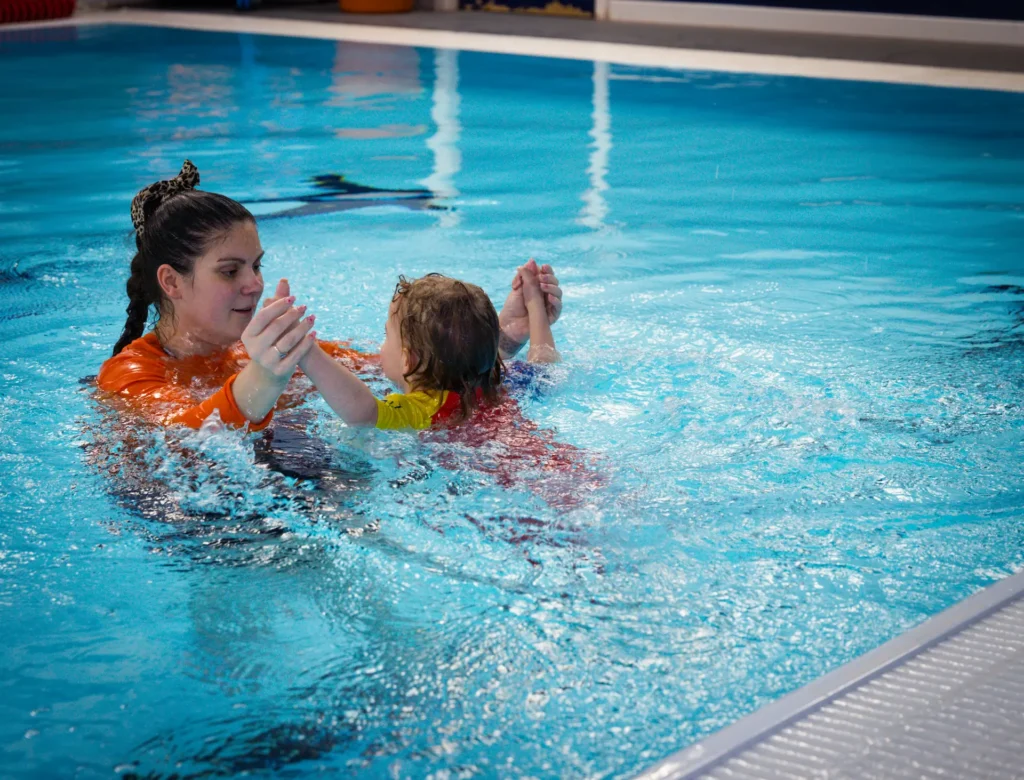Teaching your baby to swim is one of those amazing bonding moments that create core memories for parents or guardians. Seeing your little one splashing and being in the water for the first time is a heartwarming experience. Whether you already know how to swim or you’re learning alongside your baby, it’s a fantastic opportunity to bond and learn together. This blog post will cover the essential tips when teaching your baby to swim.
Pre-checks Before You Start
Before diving in there are some important pre-checks to consider when teaching your baby how to swim. These will ensure your baby can enjoy the water whilst still staying safe during their time in the water.
Know your limits
If you don’t know how to swim, it’s best not to teach your baby on your own. Most swim schools offer baby swim lessons where you can get in the water with your baby and support their transition to being comfortable in the water. It can be daunting to take your baby in the water for the first time, especially if you’re not confident in your own swimming skills. Professional instructors can guide you on the right positions to hold your baby and how to make the experience enjoyable and safe. Baby swimming lessons are a great place to start as they are designed to teach babies fundamental skills that your baby can build on as they progress through the years.
Choose the right pool
Look for pools that offer baby-specific swim sessions. These pools are usually warmer and quieter than regular sessions, creating a more comfortable environment for your baby. An ideal pool temperature for babies is around 29-31 degrees Celsius. The right environment helps your baby feel secure and happy, which is crucial for their early water experiences.
Choose the right time
Aim to go swimming when your baby is well-rested and fed. A tired or hungry baby is less likely to enjoy the experience. Start with short sessions of around 10-15 minutes to help your baby get used to the water without becoming overwhelmed. Ensuring your baby is in a good mood can make a significant difference in how they react to their first swimming experiences.
Fundamental Skills To Teach Your Baby
Enter the pool safely by holding your baby close for support and make plenty of eye contact to offer reassurance. This not only makes your baby feel secure but also helps build trust.
Getting comfortable with water
Start with a bath toy that has holes, like a watering flower jug. Let your baby hold it and play with it. This helps them associate water with fun and gets them used to the toy. Once they are comfortable with the toy, gently pour water onto their face. Remember never to wipe the water away; let them do it themselves to show it’s not something to fear. This teaches them that having water on their face is normal and not something to be scared of.
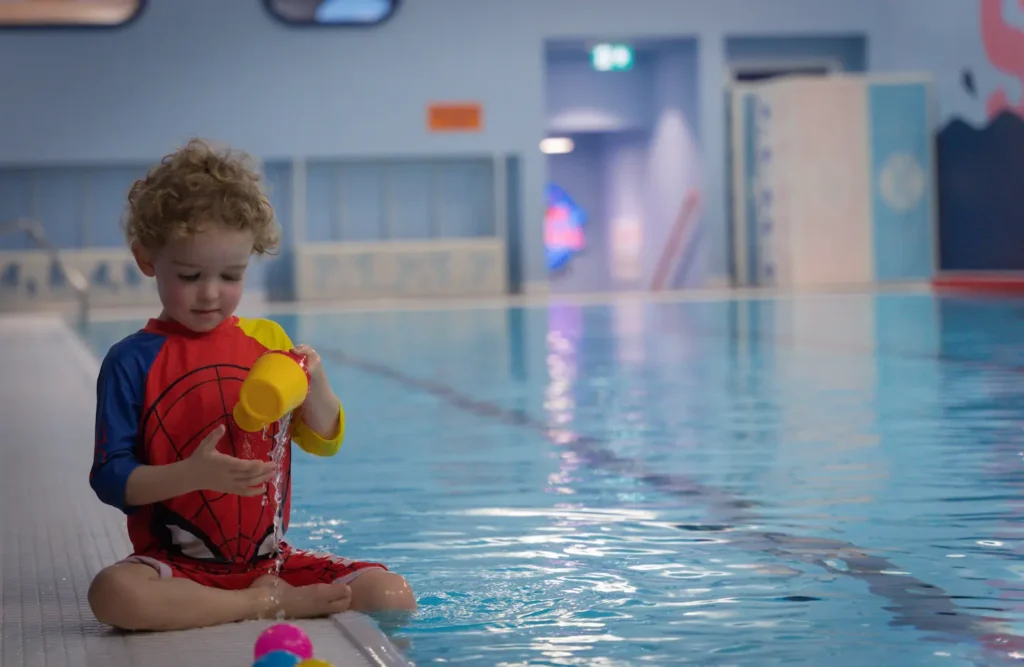
How to stop babies from inhaling water
Teaching your baby not to inhale water is essential. One of the ways to do this is to show them how to put their face in the water and blow bubbles. At the start, they’ll just lick the water or maybe dip their chin. With time, they’ll learn to blow bubbles, which is a great start for breath control. Demonstrating this yourself can be very effective, as babies love to mimic their parents.
Blowing bubbles helps babies from inhaling water and later on in their journey also helps with breath control. When they are in the water they blow bubbles to slowly exhale, and when they come out for air they inhale.
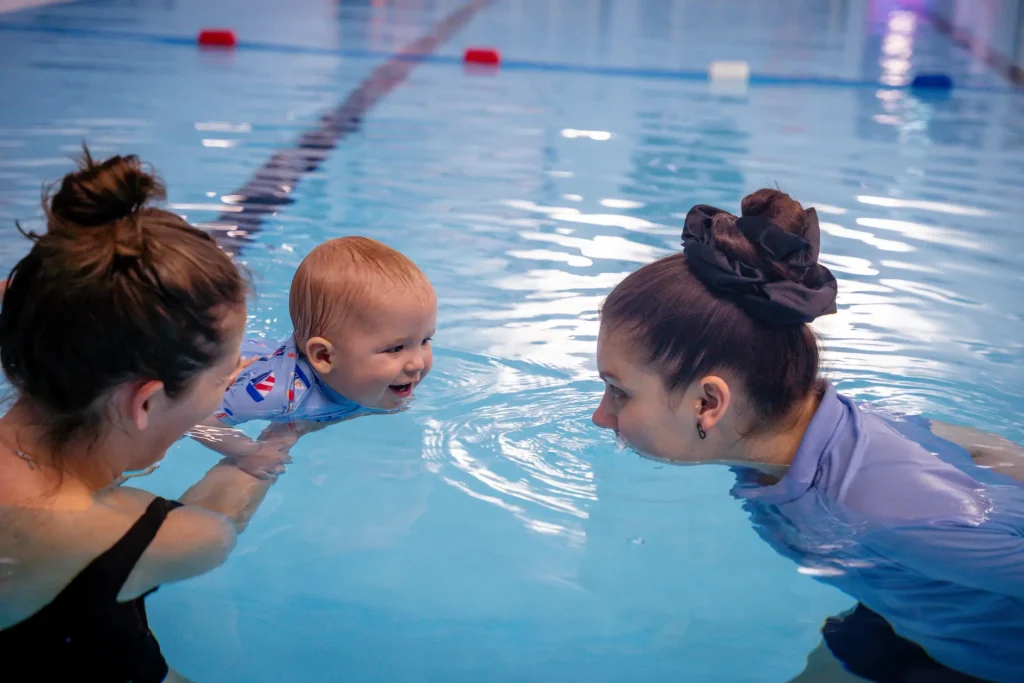
Floating on their back
Lie your baby on their back while supporting them closely. This position is important for water safety as it helps them learn how to float. Encourage them to look at things in the sky to keep their head up and avoid getting water in their mouth. This keeps their airways clear and helps them feel more secure. When you are both comfortable gently walk around while letting them float, keeping them comfortable and safe. This movement can be soothing and help them get used to the sensation of floating.
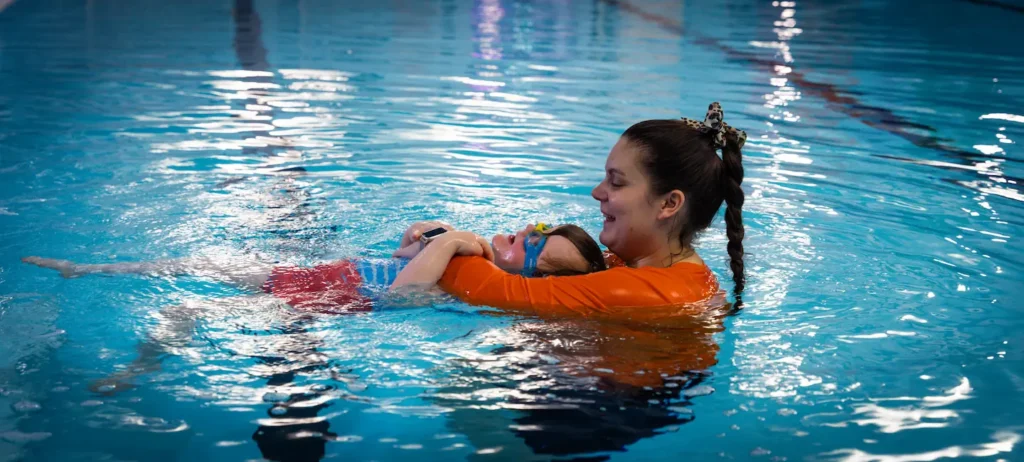
Teaching the monkey crawl
Teaching your baby how to “monkey crawl” along the edge of the pool is a valuable skill for water safety. It teaches your baby how to hold onto the pool edge and move along it independently which can be life-saving, as it provides a way for your baby to reach safety if they ever find themselves in deep water or away from the steps.
Show your baby how to hold onto the edge of the pool with both hands. Move one hand at a time along the edge, mimicking a monkey’s crawl. Then place your baby at the edge of the pool and support them as they try to move hand over hand. Encourage them with smiles and positive words to make the experience fun.
Like any new skill, regular practice helps. Incorporate this activity into your swimming routine to build your baby’s confidence and ability to move along the pool’s edge independently.
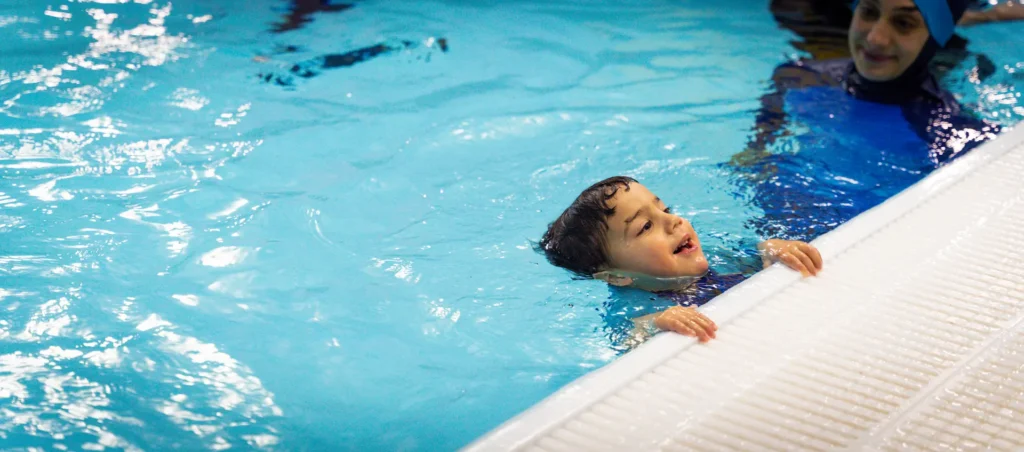
Baby Swimming Lessons: The Next Step
Teaching swimming involves breaking down the strokes into manageable steps. There are four main strokes: backstroke, front crawl, breaststroke, and butterfly. Each stroke requires a different set of movements and skills. While this blog can’t cover how to teach all these strokes, it emphasises starting with the basics and building from there.
Professional baby swimming lessons follow this rule and are more about building confidence and foundational skills rather than achieving immediate swimming abilities. These lessons help them get used to the water and teach them fundamental skills like floating, which is crucial for water safety. Lessons are structured to progress with your baby’s development, introducing new skills as they grow.
In baby swimming lessons, games and playful activities are used to teach important skills. For example, games that encourage your baby to kick their legs or reach for floating toys help develop their swimming movements. These activities make learning fun and keep your baby engaged. Swim Centrals program is designed to help babies transition from these foundational skills to the Learn To Swim program once they reach the age of 4. This program is aligned with Swim Englands curriculum ensuring children learn how to master all four strokes by the end!
For comprehensive learning, consider enrolling in professional baby swimming lessons. These programs offer structured and safe environments for your baby to start their swimming journey.

